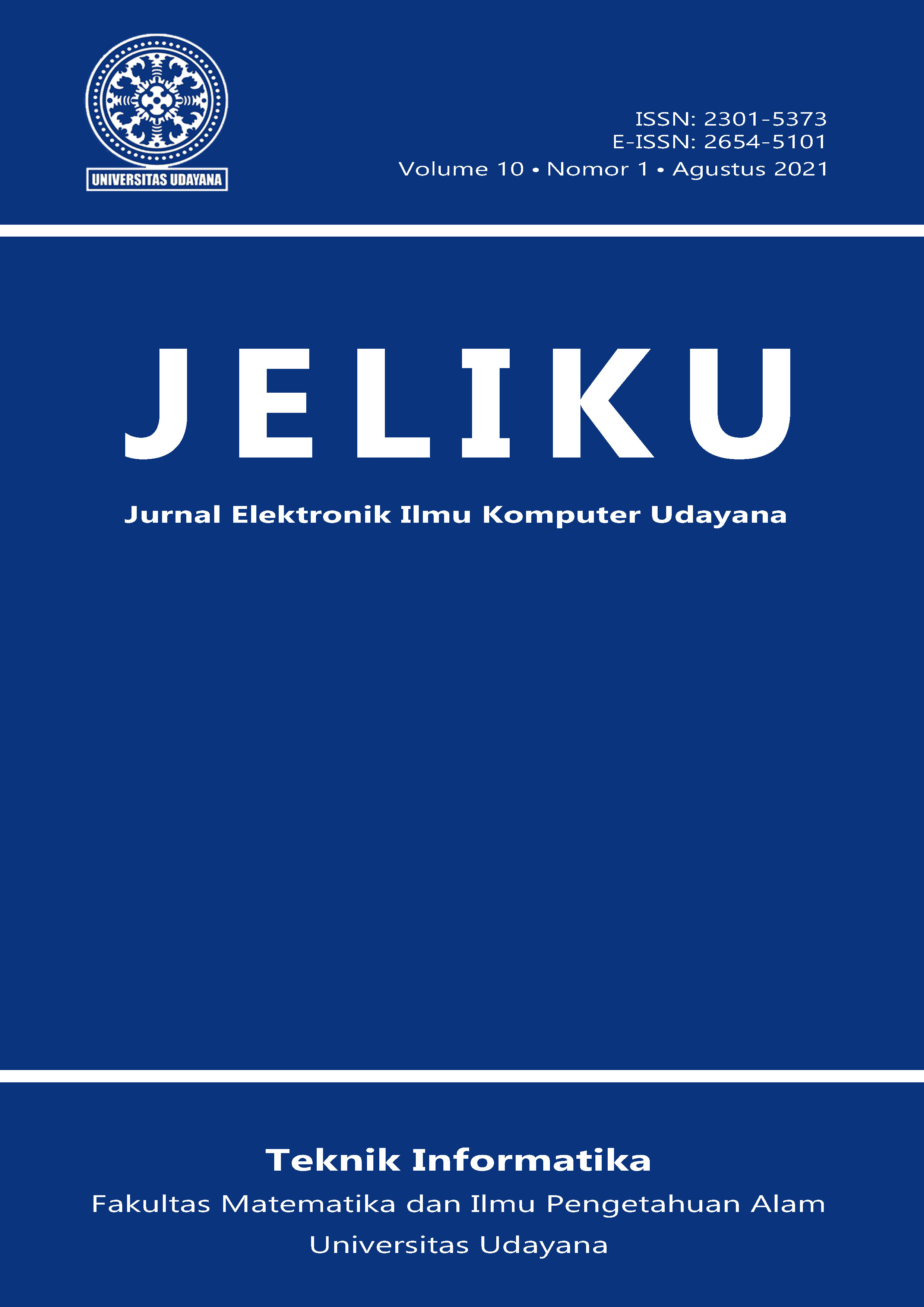Implementation of K-Means Clustering Algorithm in Determining Classification of the Spread of the COVID-19 Virus in Bali
Abstract
The COVID-19 virus or also known as SARS-Cov-2 is an infectious disease caused by the Coronavirus which attacks the human respiratory system. The COVID-19 case has affected all provinces in Indonesia, including Bali. There is a total of 7481 cases in Bali and this is due to the lack of understanding of the community towards the COVID-19 prone areas in Bali. Therefore, it is necessary to group the areas prone to COVID-19 in Bali. One of the clustering algorithms is K-Means, this algorithm uses several groups for the placement of some data with a partition system. The grouping will be carried out using data from the Bali COVID-19 Task Force website on September 18, 2020, using RapidMiner application. The results obtained divided Bali into 3 clusters with Denpasar as the center of the highest spread of COVID-19 in Bali as the red zone, then Badung, Buleleng, Bangli, Gianyar, and Karangasem in the yellow zone, and other districts in the green zone.






